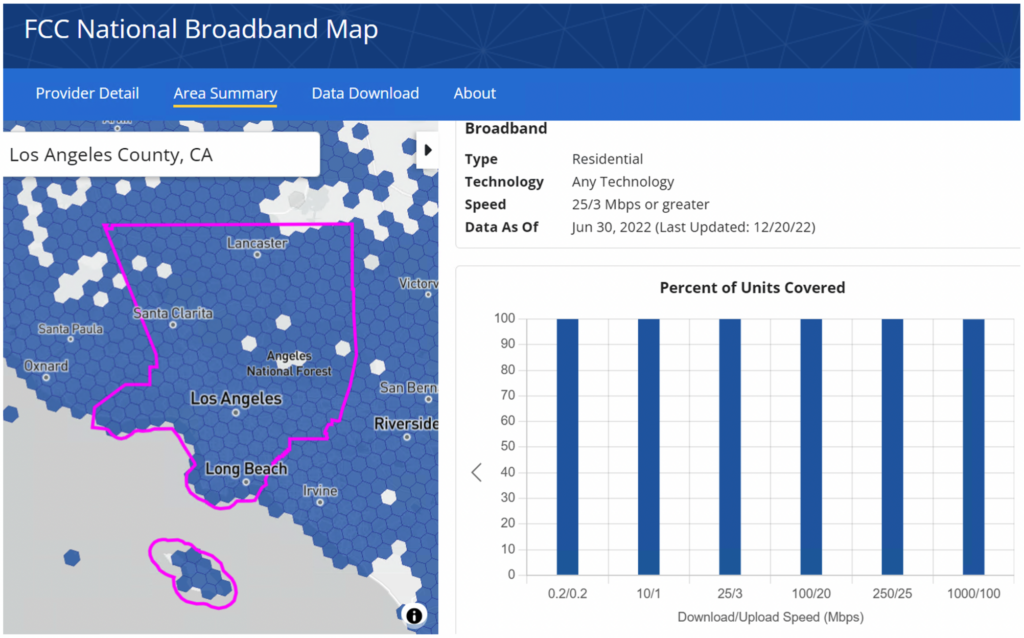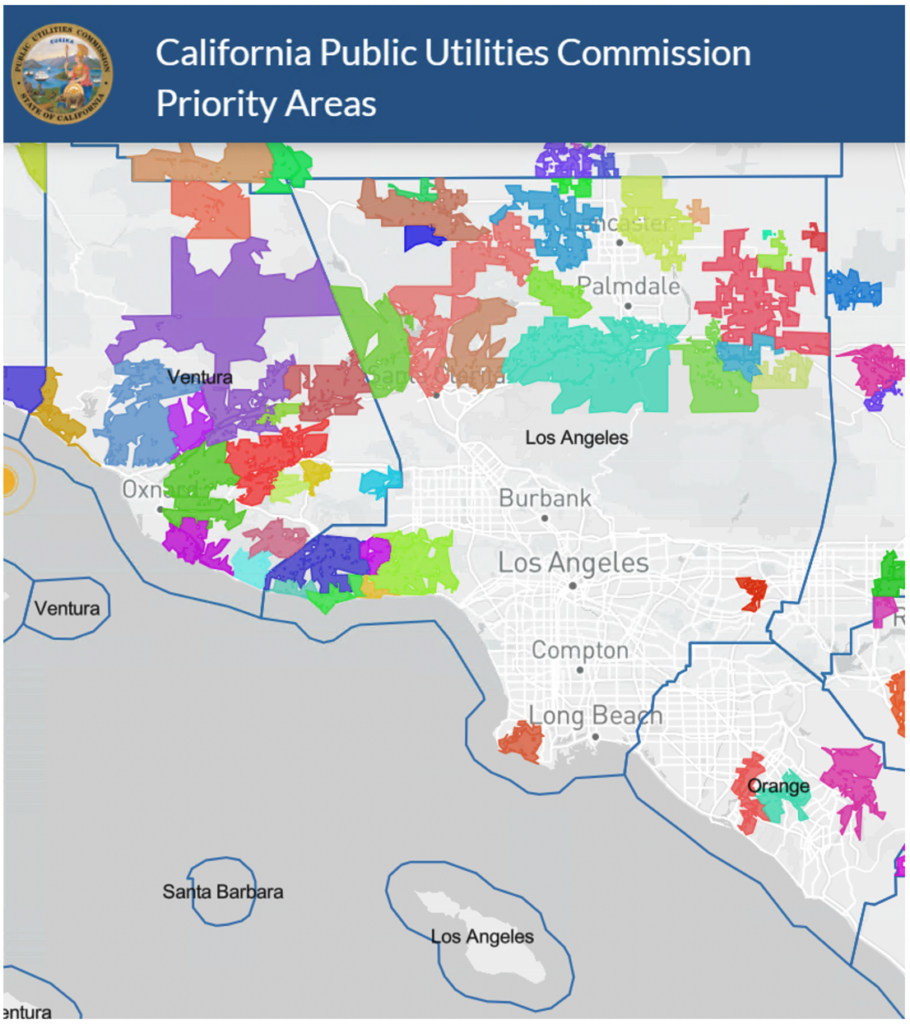On November 15, 2021, President Joe Biden signed into law the $1.2 trillion Infrastructure Investment and Jobs Act (IIJA). The law appropriates $65 billion for broadband improvements, which includes $42 billion in grants under the Broadband Equity, Access, and Deployment (BEAD) Program. The primary purpose is to build internet infrastructure across the nation, create more low-cost internet service options, and address digital equity and inclusion needs in underserved communities.
Recently, the Federal Communications Commission (FCC) and California Public Utilities Commission (CPUC) published separate maps of proposed grant funding priorities for broadband infrastructure projects. Based on the current priority criteria, Los Angeles County will be extremely disadvantaged in competing for our fair share of available funds. When President Biden announced the IIJA, it was anticipated that Los Angeles County would be well positioned to receive tens of millions of dollars for broadband improvements. Now, the majority of cities and communities that are adversely impacted by the digital divide may not be eligible for these grant funding opportunities.
Federal National Broadband Map
On November 18, 2022, the FCC released the pre-production draft of its new National Broadband Map. The map displays where internet services are available and not available across the United States. This map is based on data reported by Internet Service Providers to the FCC.
The National Broadband Map will be used to allocate BEAD funds to states and territories to help expand access to affordable high-speed internet. The BEAD program is a competitive grant process that will distribute funds based on a preference for unserved and underserved locations. Generally, unserved locations have no broadband service at all or broadband service offering speeds below 25 Mbps downstream/3 Mbps upstream. Underserved locations are areas that lack broadband service offering speeds of 100 Mbps downstream/20 Mbps upstream. The BEAD program may give additional consideration to other factors. The representations on the current map suggest that adequate internet services are available in 97% of Los Angeles County, which has eligibility implications for BEAD grants.

California Last-Mile Priority Areas
The CPUC administers the Federal Funding Account that provides $2 billion in grants for last-mile broadband infrastructure projects. On January 3, 2023, the CPUC published maps for priority areas to fund projects that connect unserved and underserved Californians with high-speed broadband service. The CPUC defines an unserved location as lacking access to reliable broadband speeds of at least 25 megabits per second (Mbps) downstream/3 Mbps upstream. The CPUC has not yet adopted a definition of an underserved location for the Federal Funding Account.
The Priority Areas Public Map is to be used by grant applicants to plan last-mile broadband grant proposals. The map uses different colors to identify areas eligible to apply, but otherwise do not represent anything specific. In Los Angeles County, priority areas include most of North County, mountainous terrain, and some cities (such as Malibu, Calabasas, Rolling Hills, Rancho Palos Verdes, and Walnut). The vast majority of the County are not considered priority areas, including most low-income, high-density communities impacted by the digital divide (areas without colors on the map below). Communities that will not be eligible for these infrastructure grants include historically underserved communities in South Los Angeles, East Los Angeles, Southeast Los Angeles, San Fernando Valley, San Gabriel Valley, and the South Bay. Also excluded are Santa Catalina Island and underserved communities in the cities of Lancaster and Palmdale.
